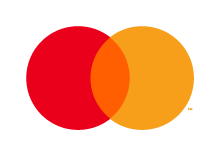Welcome to Part 2 of our series, Technical Analysis: The Key to Success in the Competitive World of Trading. In this entry, we’ll delve deeper into the key components of technical analysis, including chart patterns, support and resistance levels, and moving averages.
These concepts are essential for traders looking to improve their performance and increase their profit potential. By the end of this series, you’ll be equipped with the knowledge and tools you need to take your trading to the next level.
A. Chart Patterns
Chart patterns are formed when price action pauses, signifying areas of consolidation that can bring about a continuation or reversal of the existing trend. Popular chart patterns include:
- Flags
- Pennants
- Triangles
- Rectangles
- Cup and handle formations
Flags occur when a price moves in one direction and then pauses to form a channel.
Pennants are formed when two trendlines converge to form a triangle.
Triangles are formed when two trendlines converge to form a symmetrical triangle.
Rectangles are formed when two trendlines form a rectangular box.
Cup and handle formations are formed when a price forms a “cup” and then a “handle”. By recognizing chart patterns, traders can identify potential trading opportunities and maximize their profits.
B. Support and Resistance Levels
Support and resistance levels are price points at which the market has a tendency to bounce or reverse. Support levels are areas where buyers overpower sellers, and resistance levels are areas where sellers overpower buyers.
By identifying these levels, traders can minimize their risk and maximize their profits.
Mastering the Art of Identifying Support and Resistance Levels: Techniques for Beginner Traders
Identifying support and resistance levels is a vital skill for profitable trading. It takes a time and practice to master. So, as a beginner, where do you start?
First let’s look at what makes this skill so critical.
Why are support and resistance levels important?
Support and resistance levels are key concepts in technical analysis that can help traders identify potential buying and selling opportunities. These levels are determined by past price movements and are used to predict where the price of a security may find difficulty rising above or falling below.
By understanding how to identify these levels, traders can make more informed decisions about when to enter and exit trades.
Identifying Support and Resistance Levels
Now, let’s get into the practical information. Here are three great techniques that any novice trader should familiarize themselves with.
Technique Nº 1
One common method for identifying support and resistance levels is to look at past price movements on a chart. When the price of a security has repeatedly bounced off a certain level, that level can be considered a potential support or resistance level.
For example, if the price of a security has bounced off a certain level several times and has not been able to break through that level, it can be considered a resistance level. On the other hand, if the price has consistently found support at a certain level, it can be considered a support level.
Technique Nº 2
Another way to identify support and resistance levels is by using technical indicators. Moving averages, for example, can be used to identify potential support and resistance levels.
A moving average is a line that is plotted on a chart to smooth out price movements and show the overall trend. When the price of a security is above the moving average, it can be considered an uptrend, and when the price is below the moving average, it can be considered a downtrend.
The moving average can also act as a support or resistance level.
Technique Nº 3
Traders can also use pivot points, which are calculated using the previous day’s high, low and closing prices, to identify potential support and resistance levels. Pivot points are often used by short-term traders to identify potential levels of support and resistance.
It’s important to note that support and resistance levels are not exact numbers, but rather a general area where the price may find difficulty moving through. Traders should use multiple methods to identify these levels and also keep in mind that these levels can change over time.
A note to end on:
In summary, beginner traders can learn to identify support and resistance levels by looking at past price movements on a chart, using technical indicators such as moving averages, or by using pivot points. It’s important to use multiple methods and keep in mind that support and resistance levels can change over time.
C. Moving Averages
Moving averages are used to smooth out price action and identify potential price trends. Moving averages are calculated by taking the average of a set of price data points over a specific time period.
By analyzing moving averages, traders can identify potential trading opportunities and maximize their profits.
Navigating the Market: A Beginner’s Guide to Identifying Trends
Identifying trends in the market is an important aspect of technical analysis that can help traders make informed decisions about when to enter and exit trades. A trend refers to the direction in which the price of a security is moving, whether it’s upward, downward or sideways. Understanding how to identify trends can give traders an edge in the market and increase the chances of success.
Mastering the Basics: How to Identify Trends Using Price Charts
One of the most basic ways to identify trends is by looking at the price chart of a security. An uptrend is characterized by a series of higher highs and higher lows, while a downtrend is characterized by a series of lower highs and lower lows.
To identify an uptrend, look for a series of higher highs and higher lows on the chart. Similarly, to identify a downtrend, look for a series of lower highs and lower lows.
Drawing the Line: Understanding Trend Lines and Their Role in Identifying Trends
Another way to identify trends is by using trend lines. A trend line is a straight line that connects two or more price points and is used to identify the direction of a trend.
To draw a trend line, simply connect two or more price points on the chart. The slope of the trend line will indicate whether the trend is upward or downward.
Smooth Sailing: Using Moving Averages to Identify Market Trends
Moving averages are another popular method of identifying trends. A moving average is a line that is plotted on a chart to smooth out price movements and show the overall trend.
A simple moving average, which is calculated by averaging the past prices, can be used to identify the direction of the trend. When the price is above the moving average, it can be considered an uptrend, and when the price is below the moving average, it can be considered a downtrend.
Staying Ahead of the Game: Importance of Monitoring and Identifying Trends in the Market
Trends can change over time, so it’s important to regularly monitor the charts and indicators.
Additionally, using multiple methods of identifying trends can increase the chances of correctly identifying the current trend.
A note to end on:
In summary, identifying trends in the market is an important aspect of technical analysis that can help traders make informed decisions about when to enter and exit trades.
Beginner traders can learn to identify trends by looking at the price chart of a security and using trend lines and moving averages. It’s important to regularly monitor the charts and indicators and use multiple methods to identify trends.
Conclusion
In this article, we’ve discussed the key components of technical analysis, including chart patterns, support and resistance levels, and moving averages. We’ve also covered some techniques for beginner traders to identify support and resistance levels, and how to use technical indicators such as moving averages and pivot points.
In the next part of this series, we will take a closer look at moving averages, and how to use them to identify potential trading opportunities and manage risk. We will also discuss advanced strategies for successful trading, such as using multiple indicators, and developing a trading plan that aligns with your investment goals.
Don’t miss out on this opportunity to improve your trading performance and increase your profit potential. Continue with Part 3 now!
Part 3
In Part 3, we’ll be exploring how to apply technical analysis to trading, and take your skills to the next level.
If you’ve been following this series so far, you’ll have a solid understanding of the foundational components of technical analysis. Now, we’re going to put that knowledge into action. We’ll cover how to identify trends, analyze market movements, and develop strategies that can give you a competitive edge in the market.
By the end of this article, you’ll have a clear understanding of how to apply technical analysis to your trading and increase your chances of success. We’ll help you develop the skills to identify patterns and trends, and provide insights into how to make informed decisions based on that analysis.
The best part? This isn’t just theory. We’ll be providing real-world examples to help you see how these concepts can be applied in practice. We’ll show you how to develop a trading plan that takes into account your risk tolerance, investment goals, and time frame.
So, join us for Part 3 of „Technical Analysis: The Key to Success in the Competitive World of Trading„, and discover how to apply technical analysis to trading for increased success in the market.











